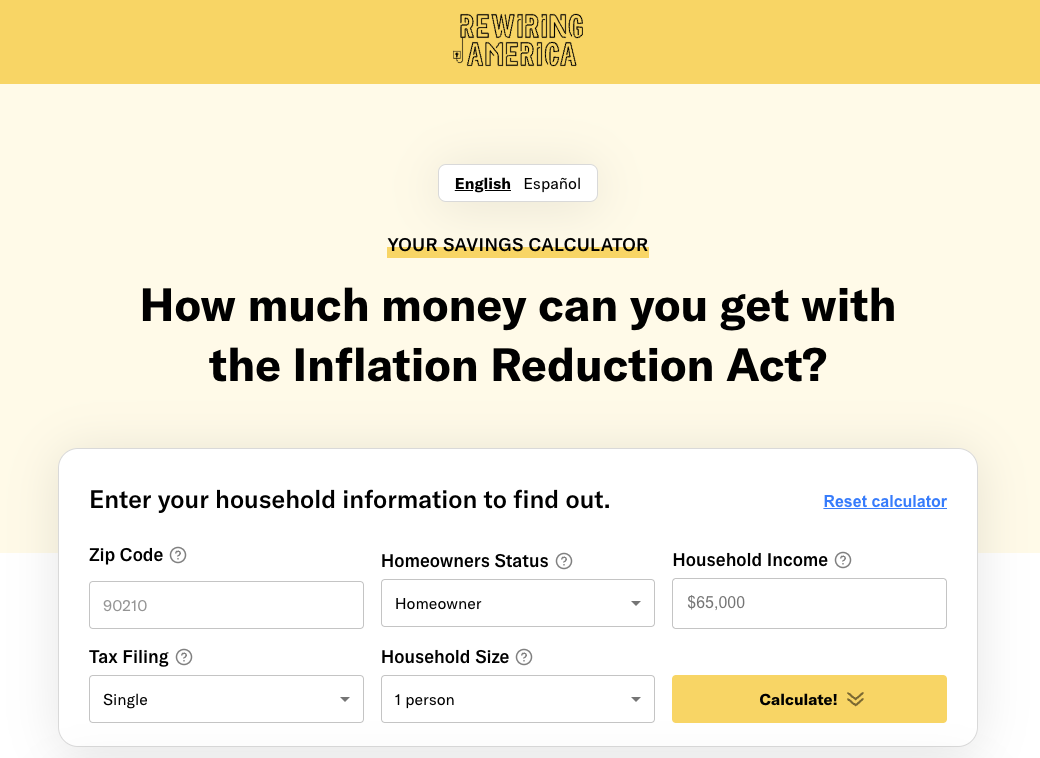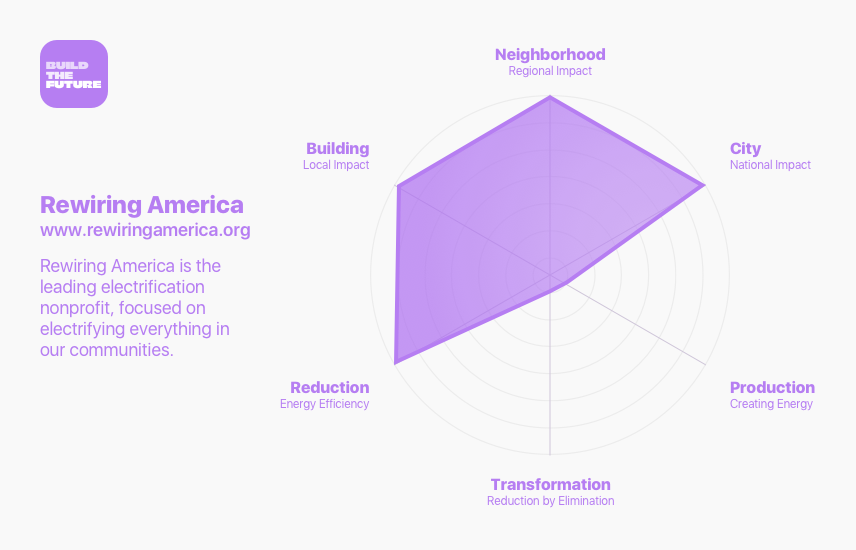How to Tackle Climate Change with APIs
IRA Savings Calculator by Rewiring America
What
I’m no climate science expert, but as I’ve learned more about climate change it’s become clear to me that when it comes to tackling climate change, what matters most is people — that even small changes in our behaviors can make a big difference.
If you’re like me, you feel dread and hopelessness whenever an IPCC report is released. It’s not surprising. The majority of Americans feel like climate change is a major threat and each new report brings with it a wave of doom-soaked media. It feels better to ignore it than to jump into action.
But the thought that keeps my spirits high amidst a gloomy outlook is believing that when enough people decide to change, our collective impact can exceed the expectations set in global climate forecasts.
Every home that decides to upgrade to a heat pump, every family that decides against a gas vehicle, and every vegetarian meal is a vote to address climate change. And with better public education and financial incentive, our spending habits and personal preferences can pressure markets to decarbonize major sectors of the economy.
So What
One way to change consumer behavior relies on improving public access to education.
Technical documents like the IPCC synthesis report and the Inflation Reduction Act are just too difficult to read and time consuming to understand. Learning about new programs, incentives, and relevant timelines aren’t easy with busy family schedules. When consumer education is left to local governments, widespread and equitable community outreach is slow — so non-profit organizations and for-profit businesses form to fill the gaps.
Although I’d love a tldr.gov or r/ELI5gov subreddit someday, today we have Rewiring America.
Rewiring America is the leading electrification non-profit focused on electrifying everything in our communities.
Non-profits like Rewiring America combine expertise and partnerships to create meaningful outreach programs. Programs like Become a CEO for Electrification lean heavily on key leadership figures in politics, technology, and entertainment to influence consumer and corporate behavior with data and social proof.
But RA’s core value isn’t the headliners, it’s that they’re exceptionally good at making complex information more accessible. Newsletters, policy guides, and interactive tools help bridge the gap between new policy and consumer action. The IRA Savings Calculator is a great example. It captures 5 basic details and spits out relevant rebates and tax credits that apply to individual households.
Basic API diagram identifying sources of unique data and how it finds meaningful consumer education opportunities in the electrification value chain.
Their brand and partnerships instill trust in homeowners that are charting their own path to home electrification. Whether it’s avoiding blackouts, reducing their energy bill, or simply replacing broken appliances, homeowners can trust the calculator to maximize their savings throughout their transition.
What Now
I’m excited about the Incentive API.
For those that work in tech, APIs are common, but if this is your first time seeing the acronym, it’s simply a structured way for one program (e.g. website, app) to offer services (e.g. incentive calculator) to another. An obvious example of an API is how email services like Gmail send data like emails, read/unread status, or labels to various email apps.
APIs are a critical service for simplifying access to proprietary tools and data. For the Incentive API, this means 3rd party products can access calculator data and federal incentive program data without collecting the information on their own. Every time the API is integrated into a website, mobile app, or even at a Home Depot register, RA scales their impact and enhances consumer education.
From buying a heat pump at a big box retailer to paying for services with a local HVAC installer, businesses can guarantee that their customers will maximize rebates and tax credits when purchasing qualifying electric appliances.
Basic API diagram identifying sources of unique data and how it finds meaningful consumer education opportunities in the electrification value chain.
Today, it’s simply a calculator, but in the future as RA expands the data in their API, it could mean:
upfront, transparent pricing on websites like Amazon or BestBuy
hyperlocal incentive data at the census level to help prioritize low income neighborhoods
an expansion into commercial electrification applications
adding new electrification programs and incentives
And we could see a future where:
rebates are automatically applied by local installers
deductions are shareable to accounting software
For now, we’ll have to wait and manually account for our eligible purchases. But with services like this and momentum at the local government level, people of all backgrounds and housing types will be able to take full advantage of programs that mitigate the worst effects of climate change from home.




